The Coho Salmon is a species of fish in the Salmonidae family. Other members of the family include other salmon species, trout, grayling, whitefish, char, and more. The coho’s closest relatives include the dog salmon, pink salmon, sockeye salmon, cutthroat trout, rainbow trout, and more. Read on to learn about the Coho Salmon.
Description of the Coho Salmon
Like most salmon, the appearance of this species varies based on if it is breeding or not breeding. Before they spawn, these fish have silver colored scales and darker coloration along their backs. As they begin to spawn, they grow long, hooked jaws and their coloration changes to a reddish-orange or pink.
Most individuals measure about 2 feet long and weigh about 10 pounds on average. However, some adults grow to 3 feet or longer.
Interesting Facts About the Coho Salmon
This species of salmon has a number of interesting traits and behaviors. Learn more about what makes the coho unique, below.
- Anadromous – Like most salmon, and much of the Salmonidae family, this species has anadromous behavior. The young hatch in freshwater habitats, and move to the ocean as they age. Adults spend their lives in the ocean, and return to freshwater to spawn and die.
- Redds – When they reach their preferred freshwater streams and creeks, the females dig shallow nests known as “redds.” They bury the clutches of eggs safely beneath the gravel to protect them from predators.
- Alevin – When the young fish, or fry, hatch they reach the alevin stage of their life cycle. During this stage, their yolk sac remains visible and they continue to live off of its reserves for several weeks. In the alevin stage the fry hide in their redds away from predators.
- Salmon and Pollution – During the alevin stage of their life, the fry have high sensitivity to contaminants. This means that in areas with high pollution or runoff, most of the young do not survive and the populations decline.
Habitat of the Coho Salmon
As is the case with other salmon species, this fish lives in different types of habitats throughout its life. When the young hatch, they remain in freshwater creeks and streams for some time.
As they age and grow, they move downstream into brackish water estuaries. Eventually, the fish make their way to the ocean, where they remain until they hit sexual maturity.
Distribution of the Coho Salmon
This species lives along the northern Pacific Ocean. Their range extends from Japan and Russia across the Bering Sea to Alaska. In the eastern Pacific they live as far south as northern California. People also keep this species in a number of fish farms across the globe, including Europe, Russia, the United States, and more.
Diet of the Coho Salmon
These carnivores actively chase and hunt their prey. Their diet varies based on their age, as larger fish can capture larger prey. As juveniles, they primarily hunt for small fish, insects, insect larvae, and other invertebrates. When they reach adulthood and migrate to the ocean, their diet contains primarily fish and squid.
Coho Salmon and Human Interaction
Human activity impacts this species quite heavily, and populations in some regions suffer faster decline than others. Commercial fishing is a primary cause of decline, as people catch this fish for food. Sport fishermen also target this species.
Habitat destruction also poses a danger, particularly where people build dams. The dams block access to spawning grounds and prevent the fish from reproducing.
Domestication
Humans have not domesticated this fish in any way.
Does the Coho Salmon Make a Good Pet
No, this salmon does not make a good pet. Their migratory behavior makes it quite impossible to house this species in a home aquarium.
Coho Salmon Care
Again, their migratory behavior prevents aquariums from housing this species. Some fish farms do raise the species for commercial production. Fish farms raise the fry in freshwater habitats, and house the adults in sea pens. They harvest the eggs and sperm from the adult fish and fertilize them artificially.
Behavior of the Coho Salmon
This species’ behavior replicates that of many other salmon species. Young fish spend their time in freshwater before migrating to saltwater habitats.
Unlike some other species, the juvenile cohos maintain territories and do not school. They do not maintain territories in the ocean, and congregate in groups while returning to freshwater to spawn.
Reproduction of the Coho Salmon
Spawning salmon use their sense of smell to find their spawning grounds. They swim from the ocean upstream into creeks, streams, and rivers. The females dig nests, or redds, in the gravel and deposit their eggs inside. Males then fertilize the eggs, and the females bury them with gravel.
Both parents perish soon after spawning. It takes about 6 – 8 weeks for the eggs to hatch, and another 2 – 3 weeks for the fry to leave the red. They reach sexual maturity at 3 – 4 years old.

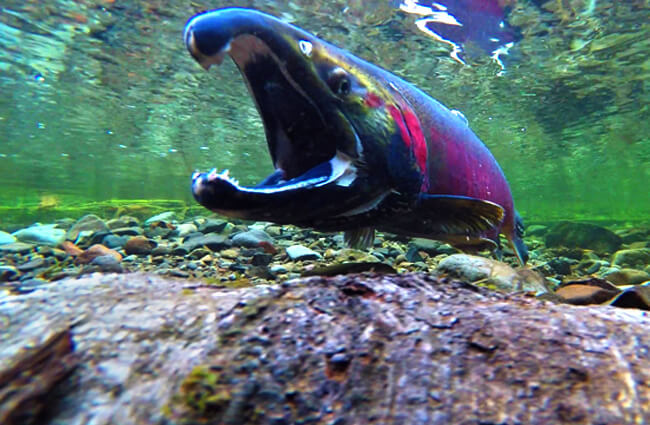
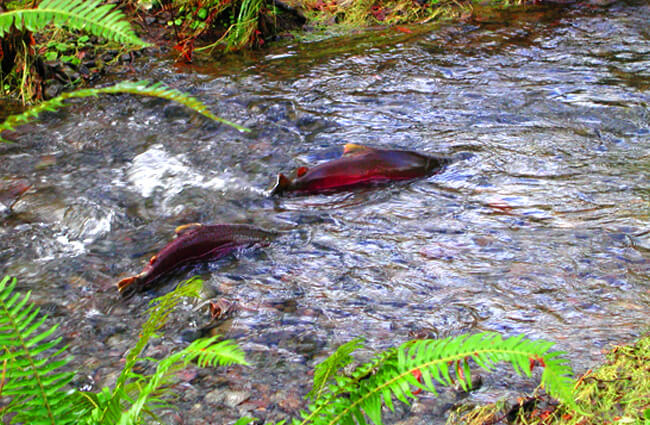
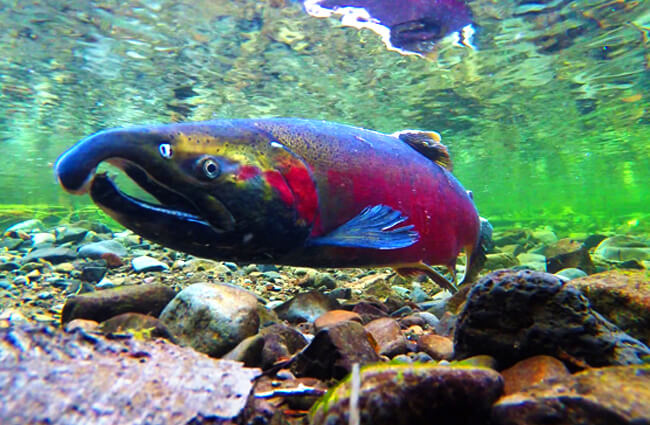

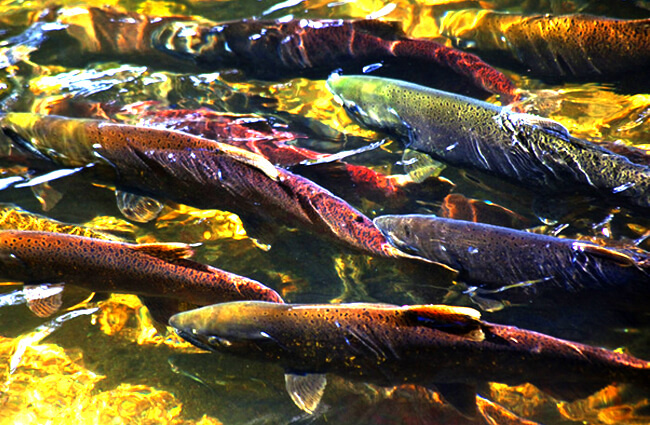
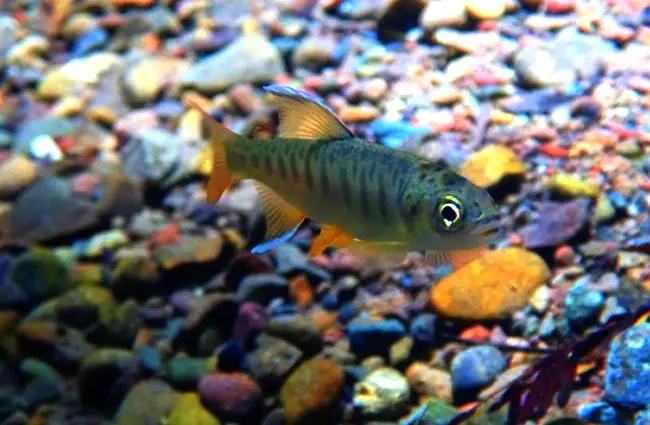
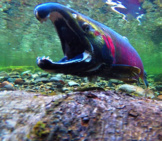

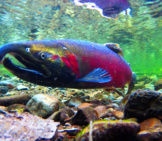
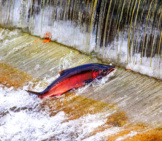


![Red Angus Closeup of a beautiful Red Angus cowPhoto by: U.S. Department of Agriculture [pubic domain]https://creativecommons.org/licenses/by/2.0/](https://animals.net/wp-content/uploads/2020/03/Red-Angus-4-238x178.jpg)












![Red Angus Closeup of a beautiful Red Angus cowPhoto by: U.S. Department of Agriculture [pubic domain]https://creativecommons.org/licenses/by/2.0/](https://animals.net/wp-content/uploads/2020/03/Red-Angus-4-100x75.jpg)

